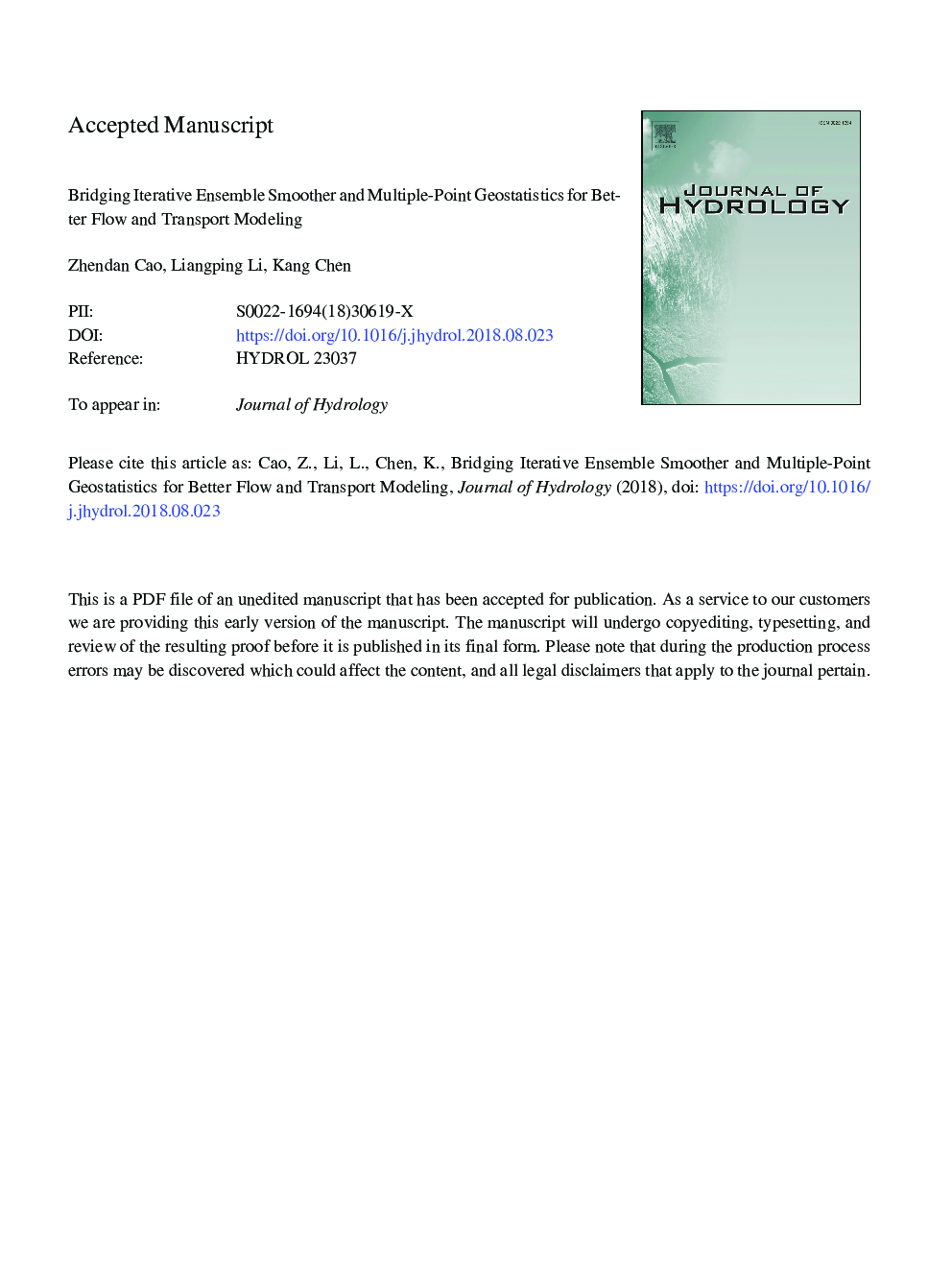| Article ID | Journal | Published Year | Pages | File Type |
|---|---|---|---|---|
| 10118230 | Journal of Hydrology | 2018 | 24 Pages |
Abstract
Inverse method can be used to fill the gap between huge amount of data from sensors and complex groundwater model. The iterative Ensemble Smoother (iES) is one of the most efficient algorithms applied to groundwater modeling for data assimilation. However, the iES only works for multi-Gaussian fields, because two-point statistics are used to estimate the co-relation between state variables and parameters. In curvilinear geometries, such as sinuous channels in fluvial deposits, the distribution of hydraulic conductivity is non-multiGaussian. Multiple-Point Geostatistics (MPG) method has gained popularity for modeling curvilinear structures by conditioning on directly measured data, such as conductivities. This paper is aimed at bridging the iES and MPG method via pilot points to deal with inverse problem for further conditioning on indirect data, such as piezometric head, in non-Gaussian fields. As a result, the better flow and transport modeling will be achieved because both data and the concept model (e.g., geological structures) are honored after data assimilation. To do that, the iES is used to update conductivities at pilot points by assimilating indirect data, then the updated values at pilot points together with measured conductivities will be used as hard data to model hydraulic conductivity field via Direct Sampling, an MPG method. A synthetic example was used to demonstrate the methodology in terms of characterization of conductivity and flow and transport predictions. The results show that this new approach can not only assimilate dynamic data into groundwater flow model but also preserve curvilinear structures.
Keywords
Related Topics
Physical Sciences and Engineering
Earth and Planetary Sciences
Earth-Surface Processes
Authors
Zhendan Cao, Liangping Li, Kang Chen,
